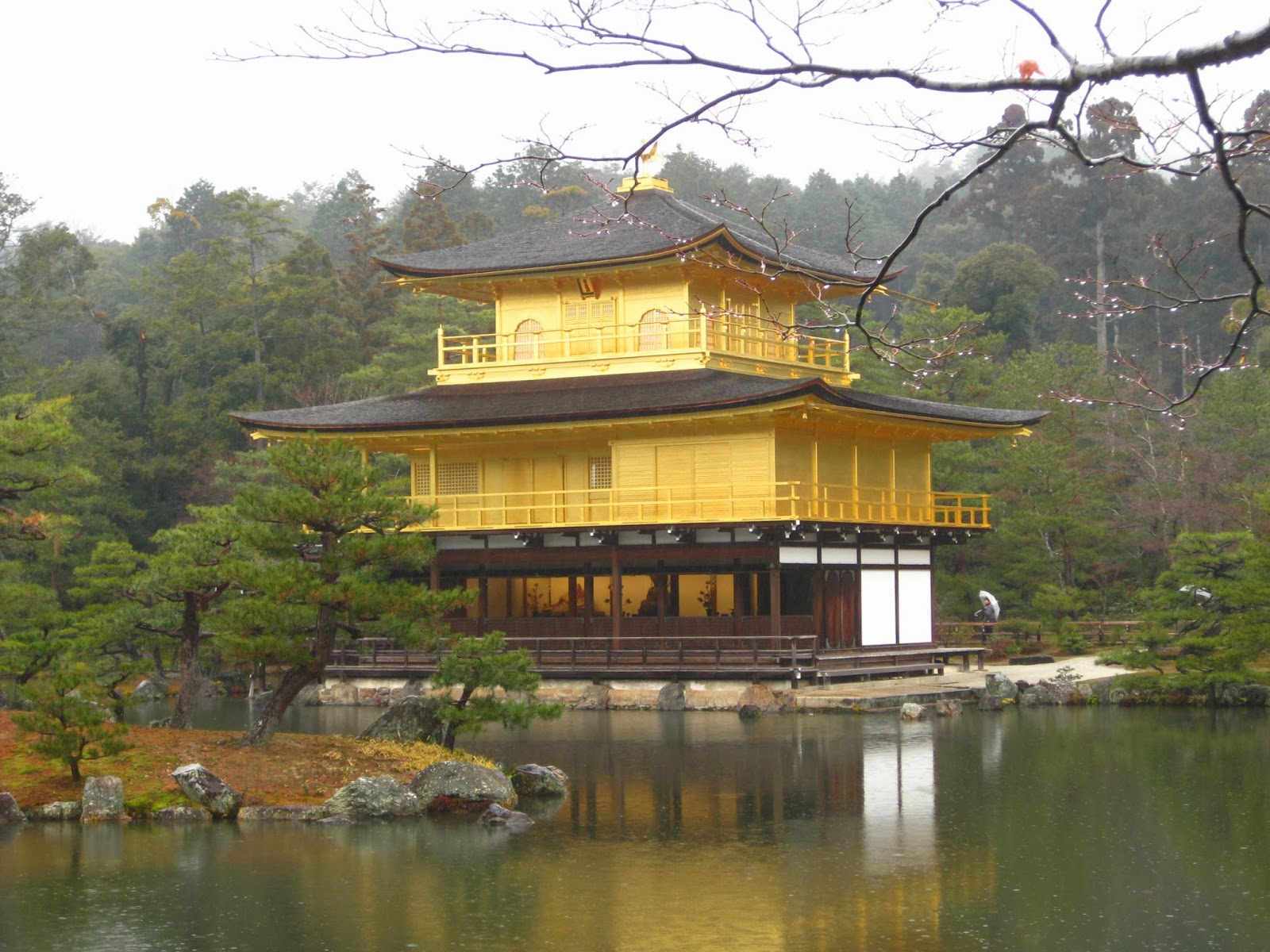To have only one day in Kyoto
is to do her a grave injustice but unfortunately that was how the dice roll'd; a
veritable excuse to visit again. It was the only wet day on our trip and the
rain was of the gentle but lingering sort that you knew would accompany you all day. Far from being spurned, we
visited two main sights – the Kinkakuji or the golden pavilion, and the
Kiyomizu-dera or the clear water temple.
 |
| Add caption |
Built in the late 14th
century, the 600 year old Kinkakuji was burnt down in 1950 and rebuilt. Surrounded
by beautifully manicured gardens and lakes exemplary of the Muromachi period, laid
out in the zen-inspired manner marked by simplicity, naturalism and the harmony
of land and water, the golden pavilion stands resplendent and oddly harmonious
and is breath-takingly beautiful. The rain, which posed as an adversary, actually added to the
scene – it cleared the air and coaxed the lovely smell of damp earth and fragrant pine-needles into the air. The mists, itself lending an illusive scent, veiled the mountains. Droplets of rain hung from
branches, catching in the light like delicate jewels whilst circlets of ripples played in the lake, their discreet, pattering
enhanced the tranquility and quietude of the atmosphere and playfully and gently distorting the golden reflection in the lake. The wetness added a
sheen to the golden temple, as if giving it a polish, bestowing a surreal, luminous glow. A huge contrast
from the hoydenish scenes of Dontonbori and I can’t help but
feel that this is a side of Japan that perhaps lies deeper at the core of the
people than the neon lights and sprawling metropolis.
 |
| Afternoon tea |
 |
View from the restaurant
 |
| A lunch fit for a shogun |
|
A long bus ride took us to the Kiyomizu-dera. Founded over 1,200
years ago, the temple that stands majestically on the mountain now is built in
the 17th century. The streets leading up the mountain are kept in
the ancient fashion, with cobbled streets and houses reminiscent of a time gone
by. The party refueled at a wonderful noodle restaurant with a
sigh-worthy view, attentive service and a delectable selection of food. There is a delicacy of touch, an attention to detail and a healthy sense of pride in the artistry and craftsmanship with which Japanese food, even simple ramen or soba noodles are made and presented. This makes the task of the consumer that much more enjoyable.
 |
| Small alley on the way to the temple |


The temple’s grand architecture is stained with the marks of age. The large
veranda jutting precariously over a high drop provides a grand and open vista of the surrounding mountains and woods. The elevated platform was also the place where pilgrims used to famously take the plunge. If they survived the
4-5 storey fall, their wish would be granted. Less adventurous, we sufficed in
taking in the atmosphere, watching people in traditional kimonos making wishes
to the shrines and enjoying the great view of the mountains going in and out of
the mists. We also drank from the Otowa springs; three streams of spring water
falling into a pond where, using a long-handled brass ladle, one helped oneself
to the clear, wish-granting water. A point of interest: the five or six ladles, which are shard by all the patrons, are placed, after use, into a rack
which contains a U.V. light to sanitise them between uses – a little curlicue
which is a nice marriage of the old and the new and says a lot about the nature
of the Japanese people.


 |
| The veranda where people used to throw themselves off |
 |
| The tri-streamed spring |













Comments
Post a Comment